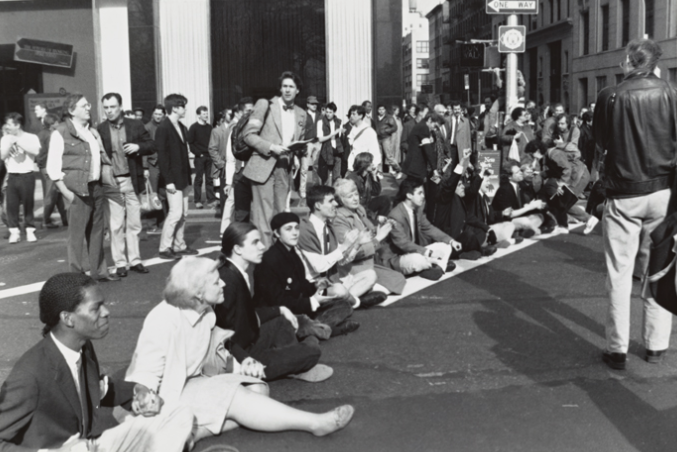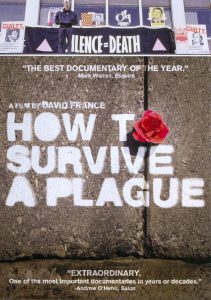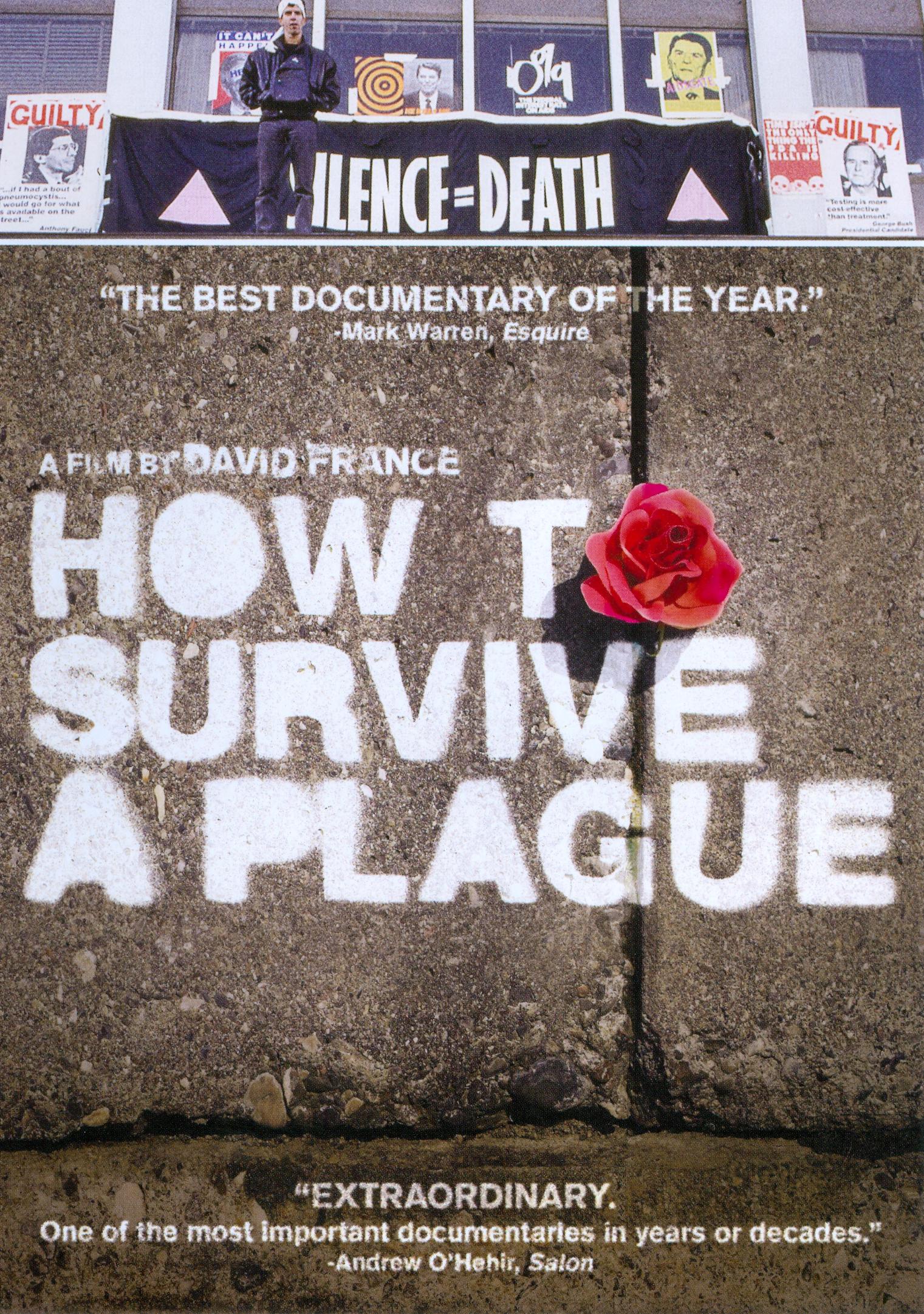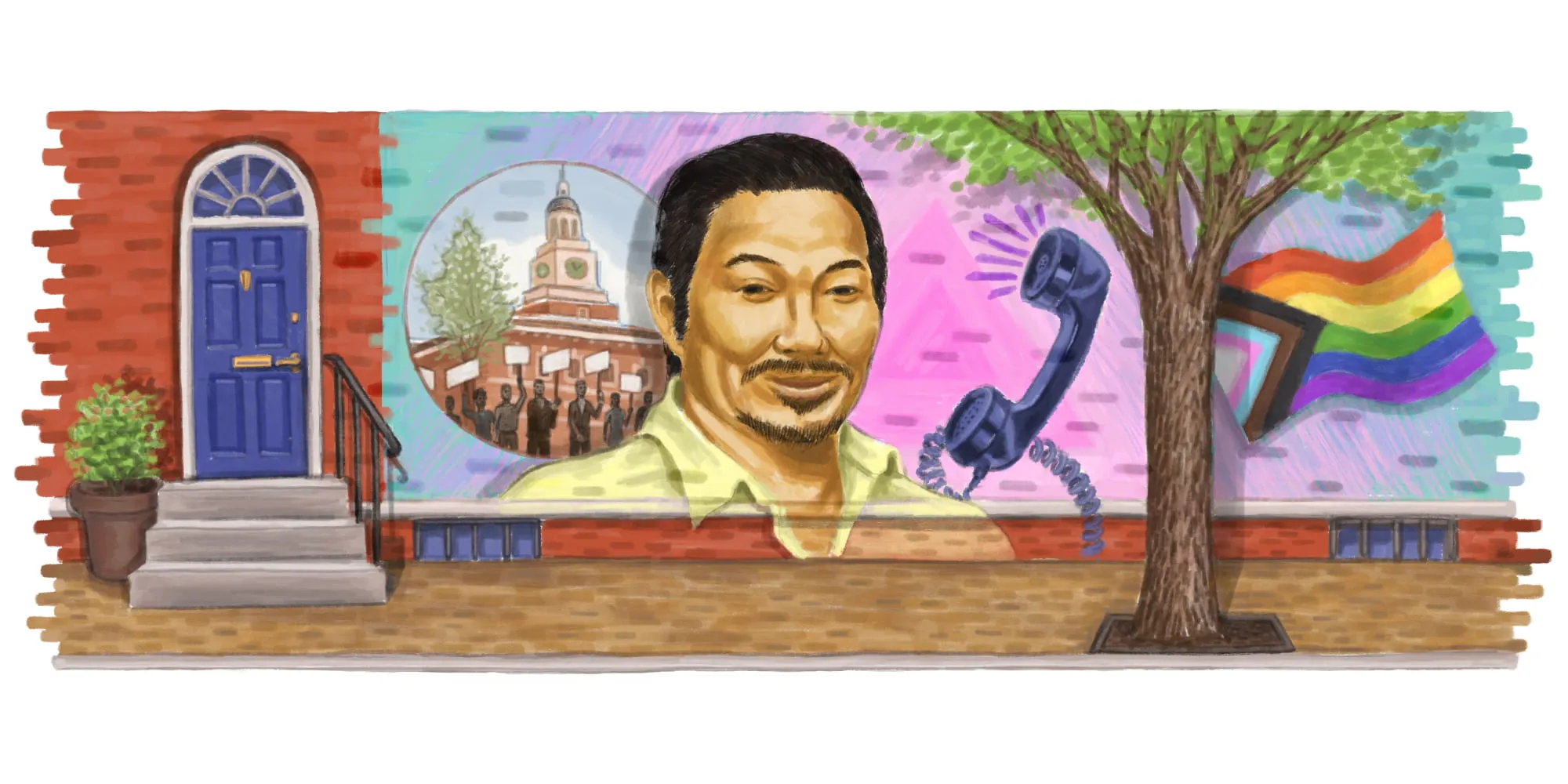
ACT UP activists sit-in at New York City Hall, 1989. Source: New York Public Library Digital Collections
On June 5, 1981, the CDC’s Morbidity and Mortality Weekly Report published a study about five patients — all gay men — treated for a rare fungal infection caused by severely weakened immune systems.
Los Angeles immunologist Dr. Michael Gottlieb, CDC’s Dr. Wayne Shandera, and their colleagues report that all the men have other unusual infections as well, indicating that their immune systems are not working. Two have already died by the time the report is published and the others will die soon after. (From A Timeline of HIV and AIDS at HIV.gov)
The study claimed that the infection was spreading among patients who identify as gay. It claimed that the cause of the infection was likely an unknown “cellular-immune dysfunction” that was soon identified as AIDS (Acquired Immunodeficiency Syndrome). This study marks the beginning of the recognition of the AIDS epidemic in the United States.
 In the decades that followed, people organized to raise awareness of HIV/AIDS, to find a cure, to educate people about treatment and prevention, and to create a culture of compassion instead of fear around it.
In the decades that followed, people organized to raise awareness of HIV/AIDS, to find a cure, to educate people about treatment and prevention, and to create a culture of compassion instead of fear around it.
Activist organizations like ACT UP (AIDS Coalition to Unleash Power) have worked since the 1980s to change healthcare policies and cultural stigma, while supporting individuals. Read about the tactics ACT UP used to pressure the FDA in 1988 and about its organizing success as a model for grassroots activism.
June 5 is also observed as HIV Long-Term Survivors Awareness Day.
Listen to the words of Vito Russo, a founding member of ACT UP, performed by actor Peter Sarsgaard as part of a Voices of People’s History event on March 21, 2017 in the BAM Howard Gilman Opera House.









Twitter
Google plus
LinkedIn